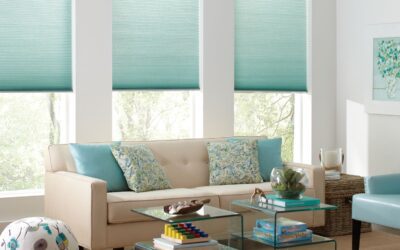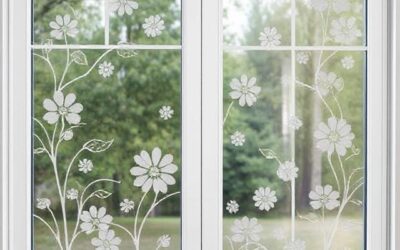When considering energy efficiency and home improvement upgrades, windows are often one of the first areas homeowners evaluate. Old or inefficient windows can cause significant energy loss, increase utility bills, and compromise comfort. But should you replace your windows entirely or apply window film instead?
In this guide, we’ll compare window film vs. window replacement to help you decide which option saves more money—both in the short term and over time. We’ll examine costs, energy efficiency, installation, maintenance, ROI, and more to help you make an informed decision.
What Is Window Film?
Window film is a thin, transparent or tinted laminate film that is applied to the interior or exterior of glass surfaces. It is designed to reduce solar heat gain, block harmful UV rays, and increase privacy and security.
Types of Window Film:
Solar Control Film – Reduces heat and glare while improving energy efficiency.
UV Blocking Film – Blocks up to 99% of UV rays to protect interiors from fading.
Security Film – Reinforces glass to prevent shattering.
Decorative Film – Enhances the aesthetics of glass without full replacement.
What Is Window Replacement?
Window replacement involves removing the entire existing window, including the frame, and installing a new one. It’s a more invasive and expensive process, but it offers the opportunity to upgrade to energy-efficient, double- or triple-pane windows with modern insulation technologies.
Types of Energy-Efficient Windows:
Double-pane and Triple-pane Windows
Low-E (Low Emissivity) Glass Windows
Gas-filled Windows (Argon or Krypton)
Vinyl, Fiberglass, or Composite Frames
Cost Comparison: Window Film vs. Window Replacement
✅ Window Film Cost:
Average Cost per Window: $5 to $12 per square foot
Professional Installation for a Whole Home: $300 to $1,000+
Lifespan: 10–15 years
✅ Window Replacement Cost:
Average Cost per Window: $400 to $1,200 (standard) or more for custom installations
Whole Home Installation: $8,000 to $15,000+
Lifespan: 20–30 years
💡 Verdict on Cost:
Window film is significantly more affordable upfront than replacing windows. If budget is your primary concern, window film offers a cost-effective solution with substantial energy savings.
Energy Savings: Which Is More Efficient?
✅ Window Film Efficiency:
Blocks up to 78% of solar heat
Reduces interior temperatures by 3–5°F
Lowers cooling costs by up to 30%
Retains more heat during winter months (with insulating films)
✅ Window Replacement Efficiency:
ENERGY STAR-rated windows can reduce energy bills by 12–25% annually
Better insulation and noise reduction
Improved airtightness and moisture resistance
💡 Verdict on Energy Savings:
Window replacement offers higher energy savings in the long run, but window film can still significantly reduce energy costs, especially in hot climates or homes with older, single-pane windows.
Installation Process
✅ Window Film Installation:
Non-invasive and fast
Typically completed within a day
No need to remove existing windows
Minimal disruption to daily life
✅ Window Replacement Installation:
Requires removal of old windows and installation of new units
Can take several days or weeks for whole-home projects
Involves carpentry, insulation, and finishing work
Potential for added costs if structural damage is found
💡 Verdict on Installation:
Window film is quicker, cleaner, and easier to install, making it ideal for those who want immediate benefits without major construction.
Maintenance and Durability
✅ Window Film Maintenance:
Easy to clean with non-ammonia cleaners
Scratches can compromise the film over time
May bubble or peel if poorly installed or aged
✅ Window Replacement Maintenance:
Minimal maintenance required
High-quality windows are built to last for decades
Resistant to warping, rusting, and rotting (depending on material)
💡 Verdict on Maintenance:
Window replacements offer greater longevity and reliability, but well-maintained window film can last over a decade with proper care.
Return on Investment (ROI)
✅ ROI for Window Film:
Lower upfront cost
Payback period: Typically 2–5 years
Eligible for utility rebates and tax credits in some areas
Improves comfort and UV protection
✅ ROI for Window Replacement:
Higher upfront cost
Payback period: 10–15 years depending on energy savings and resale value
Improves home value and curb appeal
May be required if windows are damaged or leaky
💡 Verdict on ROI:
For homeowners looking for quick energy savings with low investment, window film offers faster ROI. For long-term resale value and efficiency, window replacement is better.
Environmental Impact
Window Film reduces energy consumption, limits landfill waste, and extends the life of existing windows.
Window Replacement contributes to more waste during demolition but offers better energy performance over decades.
💡 Sustainability Verdict:
Window film is the eco-friendlier choice upfront, while high-efficiency replacement windows offer long-term sustainability benefits.
When to Choose Window Film
You should consider window film installation if:
You want to improve energy efficiency without a large upfront cost.
Your windows are in good condition structurally.
You need protection against UV rays and solar heat.
You’re looking for a fast, non-intrusive solution.
You want to enhance privacy or aesthetics.
When to Choose Window Replacement
You should consider window replacement if:
Your windows are more than 20 years old.
You’re dealing with drafty, broken, or leaky frames.
You want a long-term investment with modern insulation.
You plan to sell your home and boost its value.
You live in a region with extreme temperatures year-round.
📝 Conclusion: Which Saves More?
So, window film vs. window replacement—who wins?
| Factor | Winner |
|---|---|
| Upfront Cost | ✅ Window Film |
| Long-Term Energy Savings | ✅ Window Replacement |
| Installation Time | ✅ Window Film |
| Durability | ✅ Window Replacement |
| ROI Speed | ✅ Window Film |
| Resale Value | ✅ Window Replacement |
| Eco-Friendly Short-Term | ✅ Window Film |
| Aesthetics & Privacy | ✅ Window Film (Decorative Films Available) |
If you’re looking to save money quickly and extend the life of your existing windows, window film is the more cost-effective option. But if your windows are failing or outdated, replacing them may save you more in the long run and add value to your property.
Either way, both solutions can significantly improve your comfort, energy usage, and home performance.










